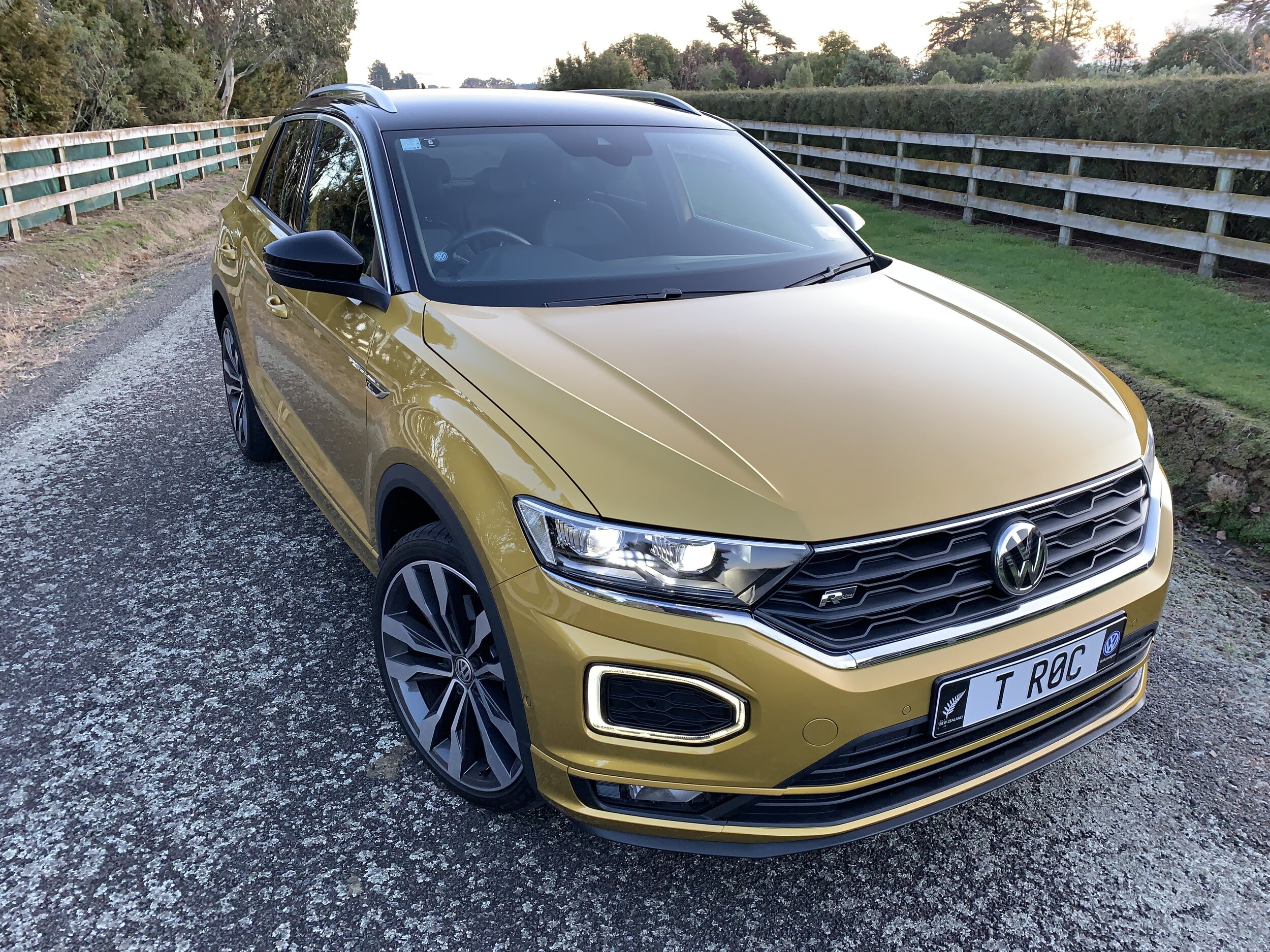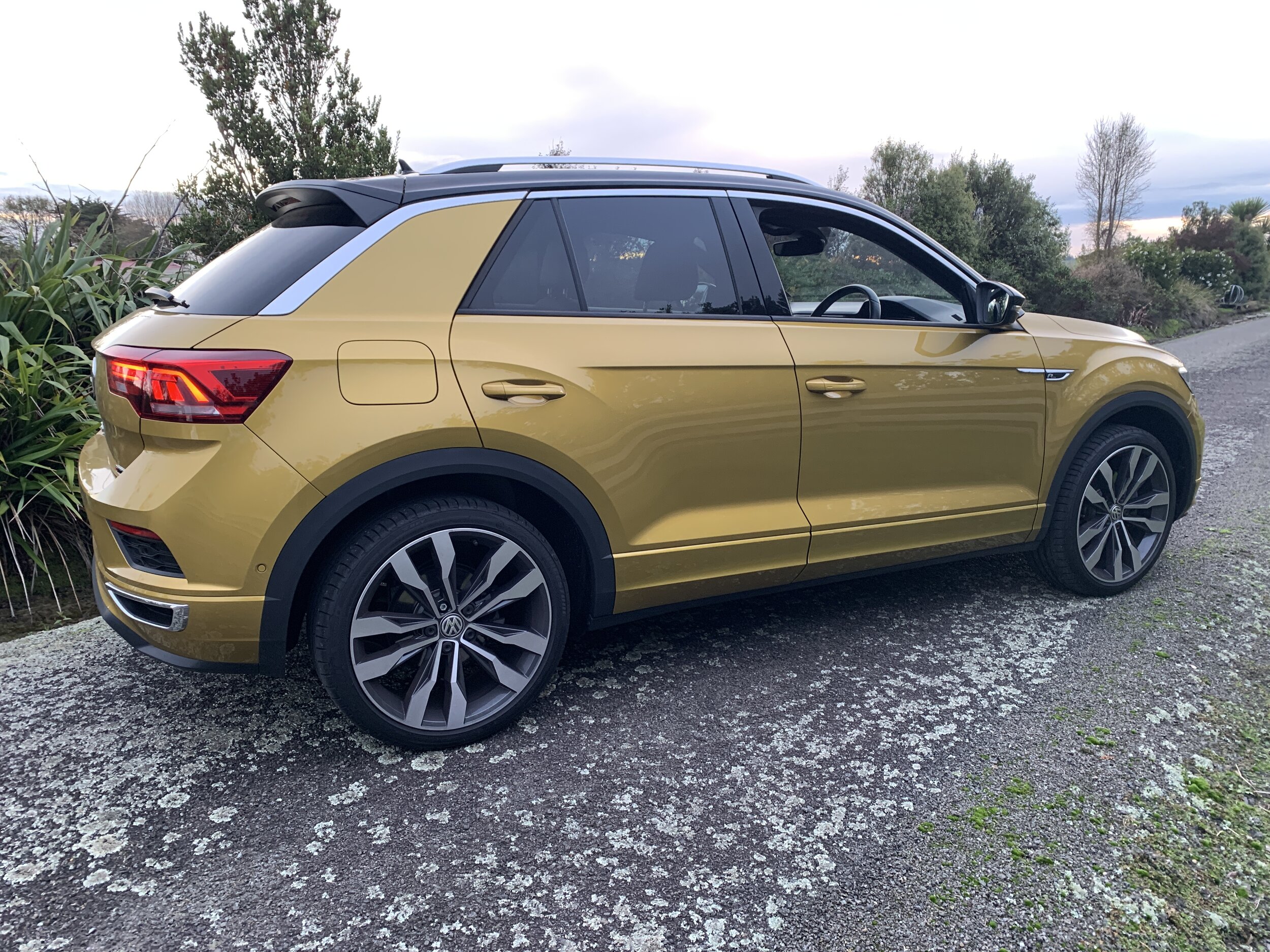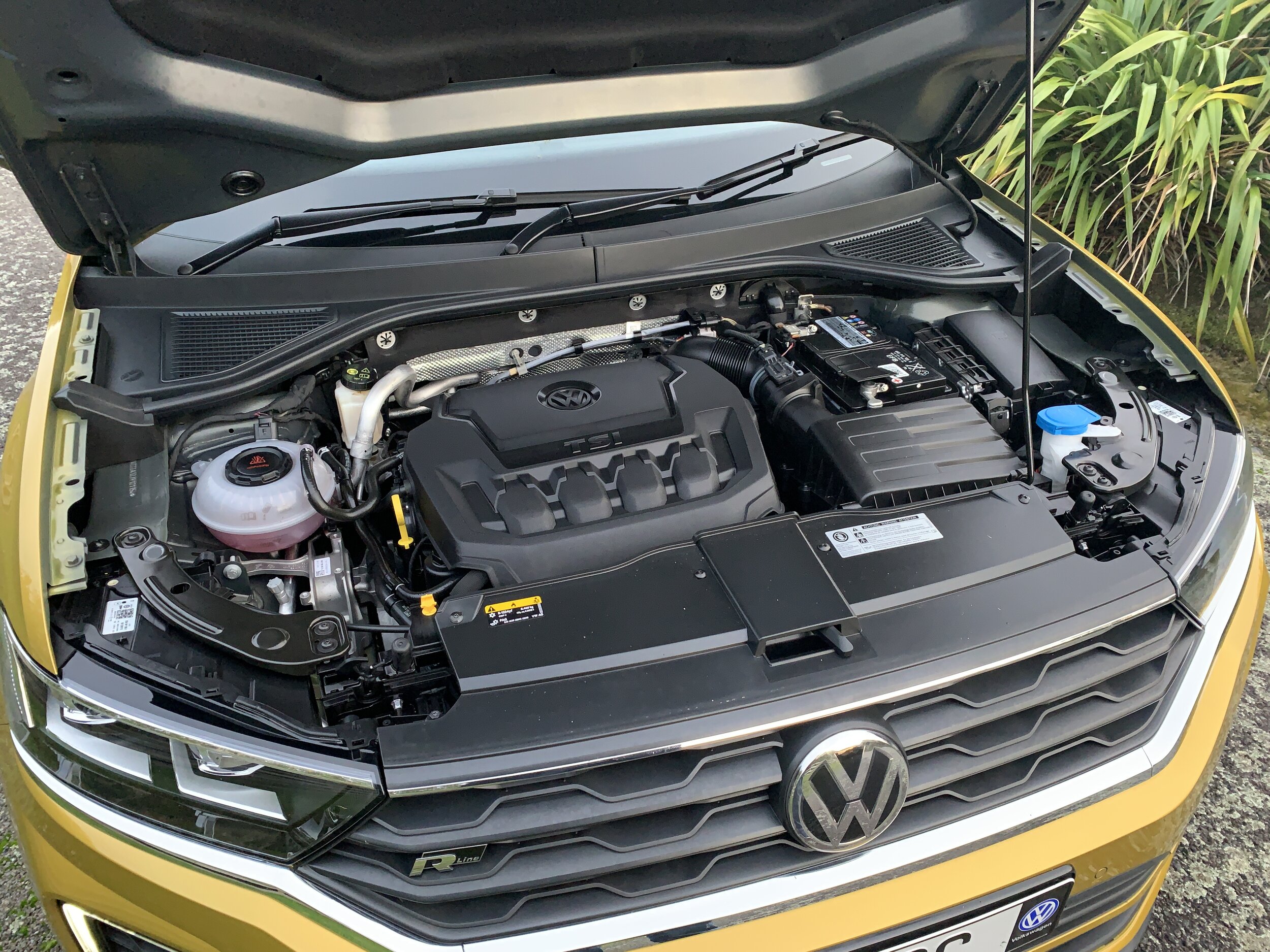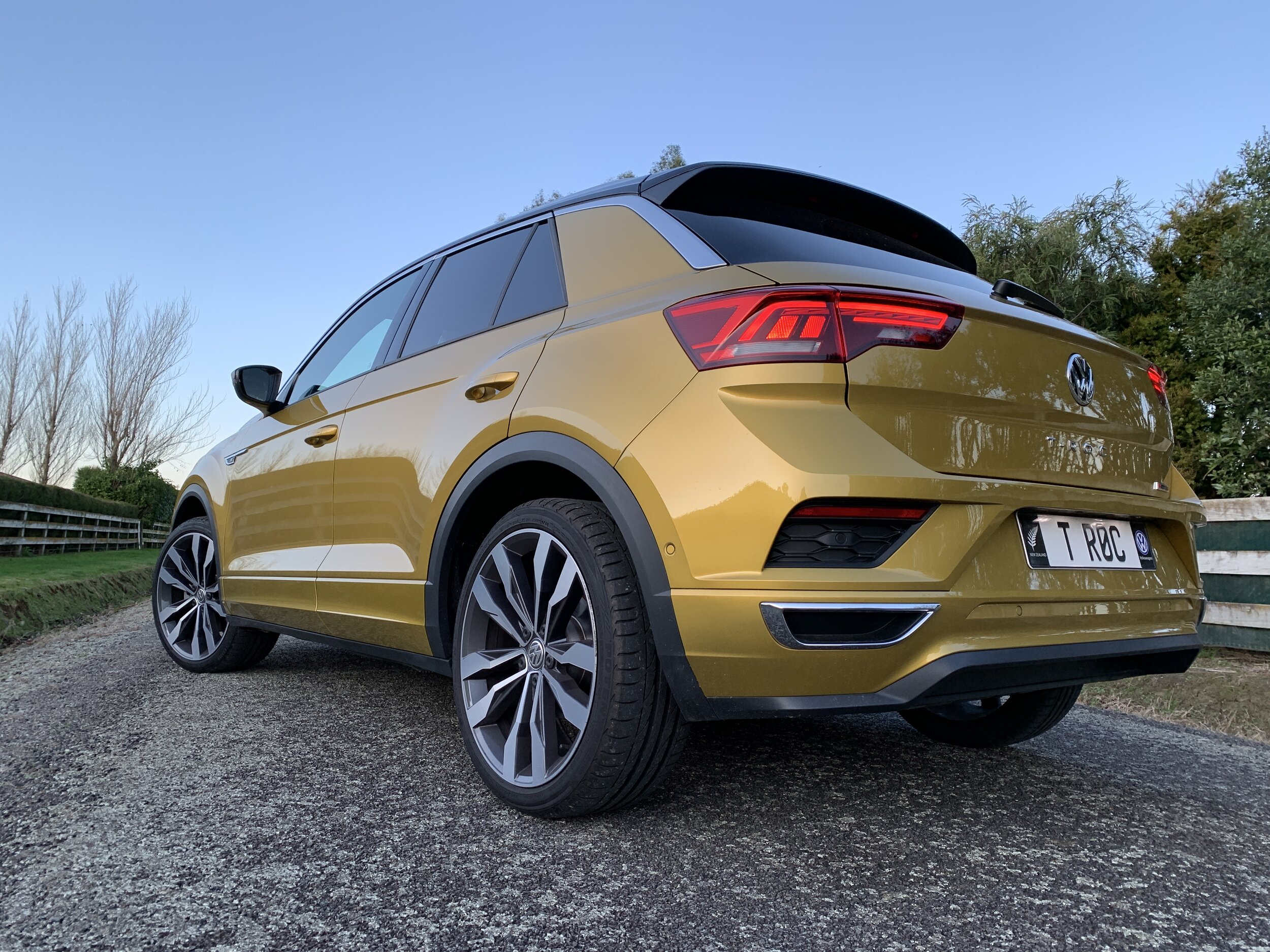VW Tiguan 1.4 R-Line: Sales champ still fighting fit?
/The third generation format of Wolfsburg’s best seller arrives with fresh looks and a more tech-set attitude.
Read MoreThe third generation format of Wolfsburg’s best seller arrives with fresh looks and a more tech-set attitude.
Read MoreAll the positive traits of a five-seater model but with a bigger boot and two extra occasional chairs. But is the flagship too plush for school run punishment?
Read MoreGermany’s biggest brand is renowned for its bangers. This one is tasty, though you do have to pay.
Read More
Price: $51,990.
Powertrain and performance: 2.0-litre four-cylinder DOHC turbocharged petrol engine; 140kW/4200-6000rpm, 320Nm/1500-4177rpm. All-wheel drive.
Vital statistics: Length 4234mm, height 1573mm, width 1992mm, wheelbase 2593mm. Luggage 392 litres. Wheels: 19-inch alloys with 225/40 R19 tyres.
We like: Chunky styling, seating comfort, handles better than you’d expect a crossover to.
We don’t like: Some interior plastics, rigid ride.
BE honest now: Who hasn’t felt a hankering over the past few years to take the wheel of a compact wannabe four-by-four with a countryside-ready stance yet none of the actual off-road gumption of a proper, actual, real SUV?
Even if the customer queue stretches for kilometres more in literal than actual sense, perhaps the selection of ready-and-able candidate vehicles really now might if they were to be collected and lined up nose to tail.
Yet, as much as the crossover catalogue might seem to already be crammed to bursting, brands with ability to add another one or two into the mix are rushing to do just that.
Covid-19 notwithstanding, this sector is an automotive Klondike. Everyone who mines it seems to strike paydirt.
Volkswagen is having two goes, with some fresh product they seem to so believe will suit consumers to a ‘T’ they’ve used that letter in the naming convention. (actually, that’s not the reason. The letter is to associate with the Touareg and Tiguan).
Today’s test focuses of the larger of the two, the T-Roc, which the maker reckons will help sales grow from 6.4 million globally to 10.6 million in just 10 years. This car will sit alongside the smaller T-Cross, but don’t go looking for it quite yet. The baby is here but the slightly bigger bro is not. Well, not officially. Confused about what I’ve just said there? All will be explained.

The ‘Roc’ – from ‘rock’ and apparently to establish the car’s off-roading bone-fides (yeah, that’ll rattle Suzuki and Jeep … not) - is of course built on the modular transverse matrix (MQB) platform that underpins others of its ilk, from the Audi Q2 to the Skoda Kodiaq and Karoq. You might need to be a particular student of VW Group architecture application to also twig to a further DNA association.
Which is to … ? Well, the car that, despite the erosion caused on hatch interest by these crossovers, is still very vital to VW: The Golf. The T-Roc can claim DNA association not just to the Golf as we know it now but also the new one coming at the end of the year (or early in 2021).
That’s not to suggest complete triplet-ship. The distinctions between the crossover and the road cars are diverse in detail, if less so in basic design and mechanical application. Still, familial links are so cemented and market trends being what they are it seems probable one will be examined as an alternate to the other.
Where to put your money? Well, there’s another twist to consider, and that’s to do with the T-Roc itself. When saying that this car doesn’t launch for another couple of months, I mean in its full NZ market spec. The scheduling is a reminder that this ‘latest’ arrival is also a late one.
T-Roc has been in production for almost three years and, in fact, there’s a 150-strong colony here already. This comprises flagship R-Lines ordered by another right-hand drive market and snapped up by our distributor when they became surplus stock. The test car is the last of that lot, so its residency status is well sorted. However, getting more has proven a challenge to VW NZ. It seems the car has been so well received in other places we’ve been pushed down the queue. The perils of being small? Well, sometimes that works to advantage, too (for instance, our modest uptake of Touareg V8s has allowed us to achieve that car ahead of many larger countries).

The early arrivals deserve mention because they might well yet differ slightly to the incoming fully-accredited local market versions that were supposed to land next month but, on latest talk, might not now arrive until November, thanks of course to Covid interruption. Nothing major; but talk is that ‘ours’ could well have a more upmarket audio unit and perhaps a less plasticky trim.
What’s also important to note is that in addition to the 2.0-litre all-wheel-drive on test, the NZ range will include a pair of 1.5-litre front-drive Life and Style editions in a lower price positioning, at $39,990 and $44,990 respectively.
That’s a positive, too. It would not be fair to call the R-Line overly expensive, simply because there are others in its price level. For instance, Mazda’s CX-30 Limited is exactly lineball with this $51,990 VW. YEt it’s fair, surely, to suggest anything sitting above $50k tends to to be considered an almost premium purchasing experience.
Having basically handed in Hiroshima’s new baby just days before driving the T-Roc, it seemed to me the Mazda only has clear advantage on content, but would be beaten on spaciousness and have to concede a touch on performance – they’re all but lineball on power but VW’s engine has almost 70Nm more torque than CX-30’s 2.5-litre.
You could quibble about the styling for ages; the VW is less daring and potentially less ‘modern’ in its look, but that’s not to say it loses appeal for it. If anything it’s a bit beefier with its flared arches and a wide grille, and there’s something more macho in its stance (regardless that it has just 2cm more ground clearance than a Golf). Those pronounced wheel arches and plastic cladding around the lower sections don’t seem false and it looks swollen in most of the right places, while the extra touches coming with R-Line - additional brightwork along the top of the plastic-clad sills, those anodised roof rails and the 19-inch alloys - add flair. Really, it’s aged quite well for a car that has been around in its home market for almost three years.
As you’d expect from VW there are plenty of safety and tech features, with a hefty focus on safety. So, Front Assist with city emergency braking and lane assist, adaptive cruise control, road sign display, blind spot monitor, park assist and a reversing camera all feature on the R-Line.

The design also delivers a useful amount of room for a family of five. The boot has enough space to swallow up bulky items though going all-wheel-drive clearly also erode capacity, with 392 litres’ boot space quoted for the R-line against 445 litres for the front drivers. Of course, you can drop the rear seats to create a significantly large cargo volume, though again it’s 1232 litres versus 1290. Throughout the rest of the interior there are several storage areas for placing oddments.
Notwithstanding that detail change seems likely, the infotainment system as I saw it was very neat and is slick and intuitive to inputs. Crucially, it also supports Android Auto and Apple CarPlay, and the USB ports for this are within easy reach at the base of the centre console.
An adjustment to the trim quality would be welcomed, though. The leather is very good and it ergonomically sound but there are hard surfaces and scratchy plastics, that, for me, don't fully reflect the price tag. For sure, those surfaces are wipe clean and durable, which is a good thing if you have kids, but overall VW could do well to see how Mazda has introduced much nicer surfaces to lend impression of a far more premium ambience.
Actually, you needn’t even go that far: As much as the T-Roc’s interior space and big boot could stand as good reasons to go for it over a Golf, the hatch in the here and now (and certainly, it seems, in its next execution) is better in terms of perceived quality.
Curiously, they’re less far apart in respect to the driving position than I’d imagined they might be, in that the T-Roc’s is more car-like than SUV-like. So much so that those that like a higher, more commanding placement may be a little disappointed. However, this does make for a more relaxing and comfortable experience and enhances the sense that it is more fun to drive that you might initially give it credit for.

As good as the Golf? For the most part, yes. Even on a winding road, where you’d think it would simply have to feel feel more top-heavy, the T-Roc surprises in retaining plenty of composure. The well-judged steering allows you accurately choose a line through the bends. It’s not an overtly sporty car, but when you push it harder it doesn't get flustered.
The ride quality might not appeal to everybody, in that it’s a little on the firm side, even when avoiding the Sport mode that obviously reduces the damper yield. If you automatically think that a crossover means a plush ride, it’s out to demonstrate otherwise. In saying that, it is certainly not so rigid as to be unacceptable and you certainly won’t find any shortcoming with other elements, such as its very sure-footed traction. If anything, it is a ‘grower’, in that the deeper under its skin you get, the more rewarding it becomes. I’d put some of that down to that well-engineered feeling that Volkswagen imbues into its cars.
The top line engine has more than enough performance to cope with the daily commute and gets up to open road speed comfortably and quickly. In all honesty, the smaller unit en route might suit its role even more comfortably. Yet the 2.0-litre’s not going to disappoint easily, either. There’s more than enough torque to not only pull its mass along quite comfortably but to also ensure the seven-speed direct shift gearbox retains its decorum even when you find sudden need to hurry up the pace. On the other hand, it is also rather economical if you light-foot the throttle.
VW is definitely a magnet brand for style-conscious buyers and those looking for looks, practicality and the latest tech in an urban four-wheel-drive (of sorts) are surely going to see plenty to like here, starting with the package’s sizing. If you think a Tiguan is too big, then the T-Roc might be for you, given it has the immediate advantage of being 252mm shorter, which – along with a tighter turning circle - makes it more manoeuvrable around town. It’s a better looking car, too.
Of course, as said, this is a very congested segment and even if you’re particularly wed to VW Group design and engineering approaches, it’s possible to shop for an alternate without leaving the broader family. The SEAT Arona and the Karoq, which play to a lower budget yet also build on the same underpinning, are equally practical and, in the Skoda’s case, slightly roomier. Alternately, you could await that new Golf – it does seem to be extremely swish.
Or go electric? Ultimately, too, VW’s boots and all foray into battery-dedicated motoring is set to deliver a plug-in equivalent of sorts, in the form of the ID.4. But that’ll be a couple of years away yet.
Meantime, there’s likelihood the T-Roc family might expand further, not to include the fatuous and climatically-inappropriate Cabriolet that’s already selling overseas but another model that outwardly seems a touch oxymoronic but will doubtless prove to be exactly to market taste. This being the R edition, which borrows all it go-fast gear from the Golf R; so a 220kW 2.0-litre mated to a DSG automatic transmission and 4Motion all-wheel drive, delivering 0-100kmh in under five seconds and a top speed of 250kmh. Grrrr.

MotoringNZ reviews new cars and keeps readers up-to-date with the latest developments on the auto industry. All the major brands are represented. The site is owned and edited by New Zealand motoring journalist Richard Bosselman.